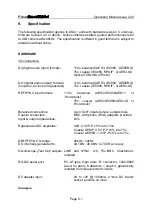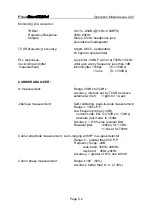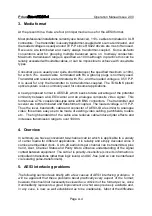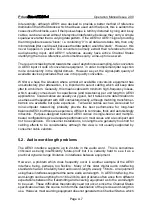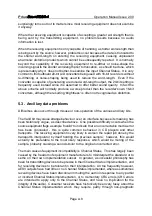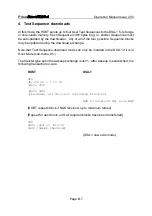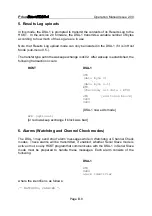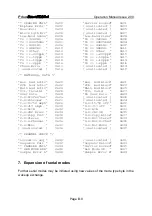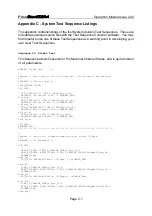
Prism
Operation Manual Issue 2.00
Page A.9
design and partly through the constraints placed upon them by various copy-
management systems such as SCMS, as described below.
'Transparency' to the Validity, User and Channel Status bits is becoming an important
issue as implementation levels rise. For example, most older AES3 digital-to-digital
equipment produced its own Channel Status output pattern (usually only a partial
implementation) which was unaffected by the incoming Channel Status, or was affected
only by one or two input fields. In general, incoming Channel Status was not passed
to the output, thus important status information about the signal, appended by the
sourcing equipment, was lost. Blocking of User bit data is equally problematic, for
example CD sub-code or DAT start-ID information may be destroyed. Channel Status
transparency is also an important issue in preserving correct operation of copyright
protection schemes, e.g. SCMS.
Quasi-transparency to ancillary data also presents a problem: Some equipment which
does pass Channel Status, User and Valid bits introduces a change in time-alignment
of the audio and status data on the way. This might cause a single-sample 'Invalidity'
indication to result in a subsequent equipment 'sample-holding' over the wrong sample,
or perhaps Channel Status timecode may become misaligned with audio. In the case
of Channel Status, partially-transparent equipment must modify some fields whilst
passing on the others intact, and so must generate its own CRC at the end of the
Channel Status block. If such equipment receives a Channel Status CRC error; it must
generate its own CRC error deliberately to warn following equipment to disregard the
parts of the Channel Status which it has passed through. This may be difficult to do in
some systems.
The issue of ancillary-data transparency is badly handled in current equipment, but the
interface standards are not always clear as to what behaviour is required, so we may
expect problems in these areas to continue or worsen.
Finally it should be noted that, surprisingly, the Parity bit is generally of little use in
detecting the onset of interface failure. This is because the intersymbol interference
effect usually means that one of the cells in the AES3 preamble is lost before a parity
error occurs. In old receiver designs this was often serious because total lock of lock
was the first indication of the onset of failure. In modern receivers the loss of a
preamble cell is treated just like any other biphase violation, including a parity error.
It is better for receiving or analysis equipment to monitor all biphase errors rather than
to look for parity errors specifically.
5.4. SCMS
SCMS (Serial Copy Management System) is a convention which has been adopted for
consumer equipment to prevent pirate-copying by only allowing first-generation copying
of original copyrighted material. The SCMS status of a signal passed between
equipment is indicated by a combination of various bits in the Consumer-format
Channel Status: These are the Copy Prohibit bit (byte 0, bit 4), the Category Code (byte
1, bits 0-6), and the Category Code Extension (byte 1, bit 7).


